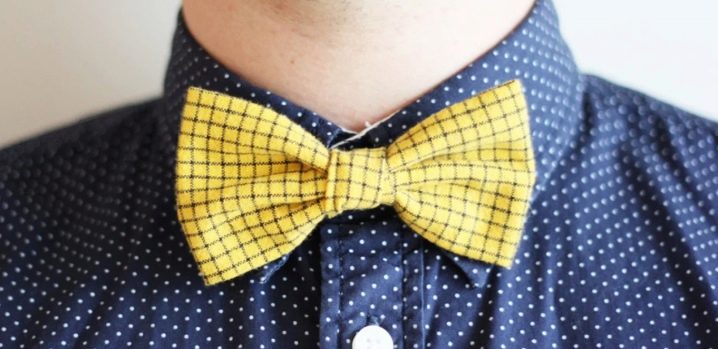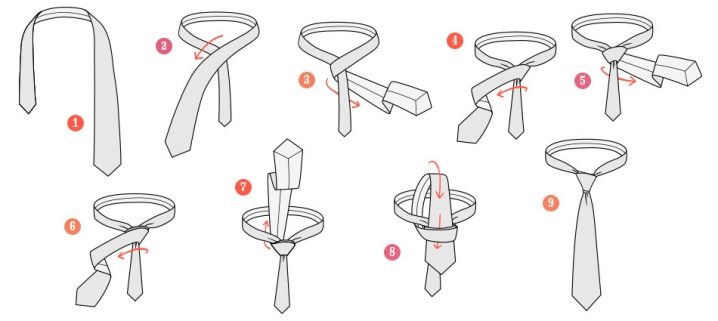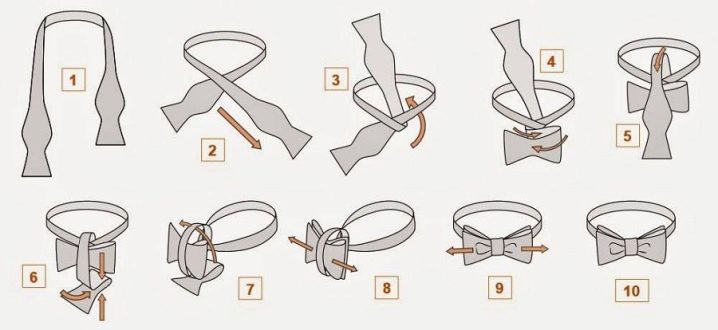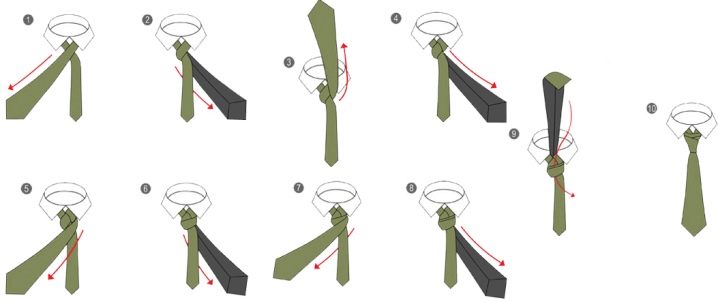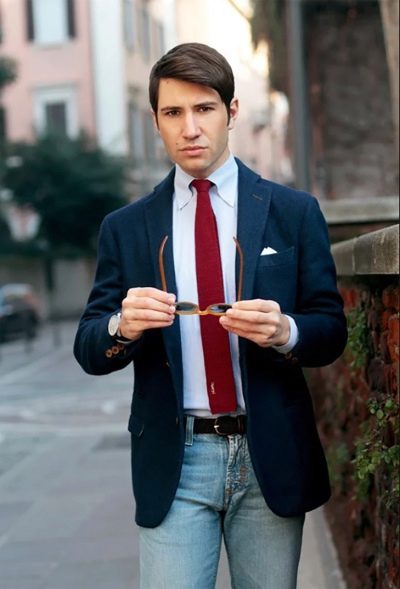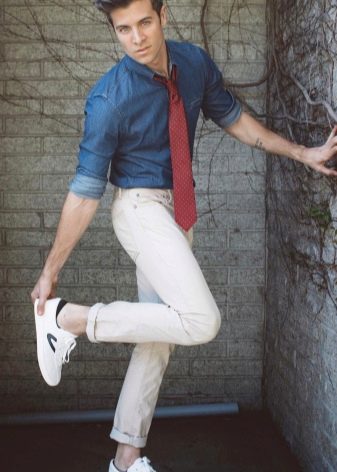How to tie a tie in the classic way?
A tie is an essential part of a man's wardrobe. Not a single official event is complete without it, and not everyone knows how to tie this accessory. How to do it correctly, we will find out in our article.
Which tie is right?
There are several types of ties: regular and bow tie. We do not take into account accessories with an elastic band: they look a little artificial. Many treat them with a fair amount of irony.
Various fabrics are used to make ties. Light fabrics are more suitable for hot weather and an everyday look, a formal event requires a higher density accessory.
The pattern on the fabric can also be different. Recently, designers never cease to amaze with a riot of color and unusual ornaments.
For everyday wear, you can use everything that can emphasize the individuality of a man, the main thing is to find that line, having stepped over which he will cease to feel confident and observe moderation.
Bright colors of ties in combination with a colorful suit will produce the effect of fanfare and jokes, the emphasis should be on one thing.
The more formal the event, the calmer the drawing and its shade should be. At the presentation of some kind of award or an important business meeting, a blue tie with green cucumbers will clearly be inappropriate, but a black one with a gray strip or a large rhombus will do.
For a business meeting, it would be wise to choose more classic lines and shapes, calmer colors. A flashy drawing will indicate disrespect or frivolity.
The length of the tie also has some rules. Don't tie a classic tie too tight.
Such a knot will cause discomfort to a man, and deep folds will damage the appearance of the tie, make it untidy.
The length of the accessory must also be strictly verified. Above and below a trouser belt is considered bad form.
Step by step description of the process
For everyday bows, simple knots are usually used, and for important events, more complex and solemn ones.
Of the everyday options, the following are usually used:
- light or simple knot:
- Pratt knot;
- Windsor knot.
Complex knots (butterfly):
- Elridge node;
- Trinity knot;
- Christensen knot;
- node Wismar.
The last listed options require more insight and experience.
The butterfly is also considered to be a solemn species for the most part, so it is better for beginners to try the classic light options.
Light knot
The scheme for tying a light knot will be as follows:
- unfold the product with the wrong side up, put the wide end of the tie on the left shoulder, place the narrow end on the right;
- we start the wide end to the right, the narrow end to the left above it;
- We throw the wide end over the narrow one in the form of a loop, pull it through the neck onto the chest, push it into the resulting loop at the narrow end from top to bottom, tighten the knot to the desired diameter.
Pratt Knot
The Pratt knot will differ in that when the wide part is thrown over the narrow one, the loop is wrapped to the neck from top to bottom, only then from right to left, thus forming a double knot.
Double Windsor
The double Windsor got its name from the fact that, in addition to the usual throwing of the wide end over the narrow one and winding the loop to the neckline, double entwining of the narrow part of the tie is used.
Butterfly
The butterfly has always adorned costumes at official events and holidays; for everyday wear it is usually not tied. The instruction will be as follows:
Elridge is perfect for an important social event; it will be too smart for a business meeting;
- Christensen is easy to adjust, while it is worth noting that it turns out to be quite compact and tight, requires some experience in tying ties;
- Trinity is also considered a more festive option, formal events are perfect for this style, but it can affect a multi-million dollar contract a little unequivocally;
- Wismar is used by men for informal meetings.
Features of tying
There are a couple of things to keep in mind when tying a knot:
- it is better to tie a tie on the shirt with which you plan to wear it;
- do not tighten the knot too tight - folds will be visible;
- do not make the knot too weak, otherwise it will skew;
- the wide end of the tie should be kept strictly perpendicular to the narrow part - this way it will be tied much more evenly;
- the more often you train, the better you will get;
- more even folds will be on a soft fabric tie.
What style is it suitable for?
The classic way of tying a tie is suitable for work, office, business meeting, daily use, date. The classic knot perfectly complements the long-sleeved shirt, trousers and jacket. For a business style, it is better to use a plain tie in calm shades, a strip or a strict check is possible. At the same time, there are less strict images, for example, if you replace trousers with an arrow with jeans or straight classic pants.
If you use a tie with a calm pattern or polka dots, then you can go with friends to sit in a bar or play bowling.
Also, do not forget that not only men can wear this accessory. This item of clothing is also practiced for going to school.
For official events, at least a tie with a classic knot will be required. The classics are always relevant.
How to tie a tie correctly, see the video below.











